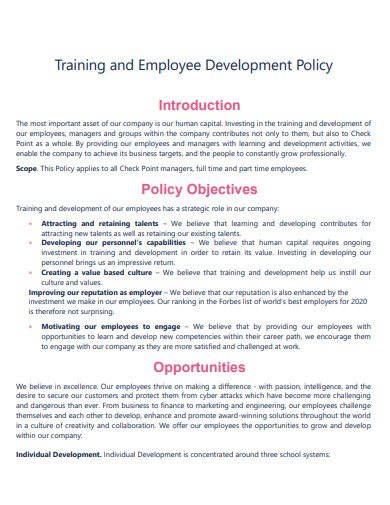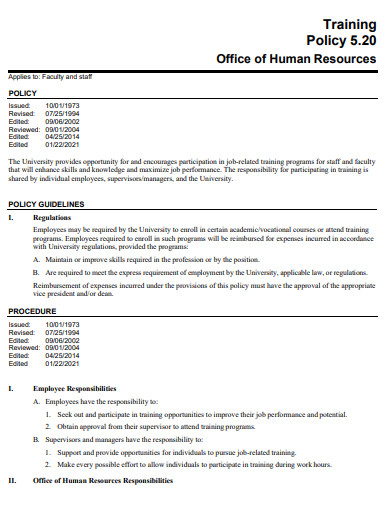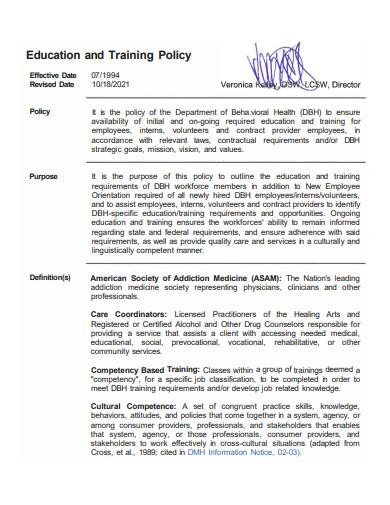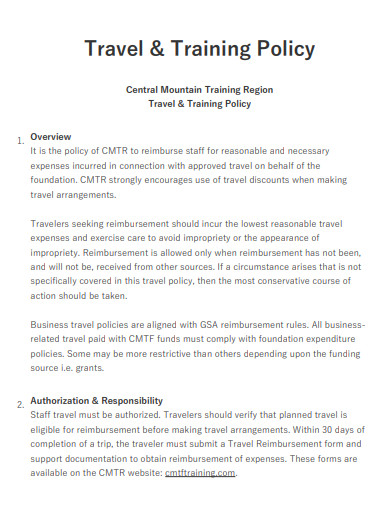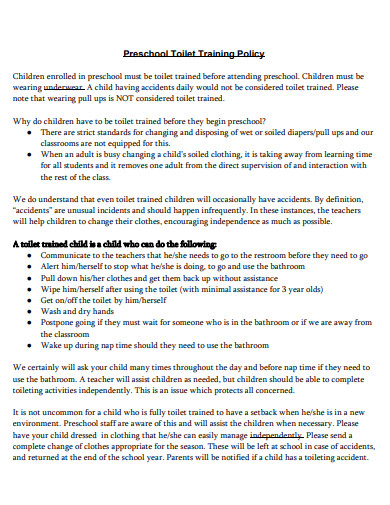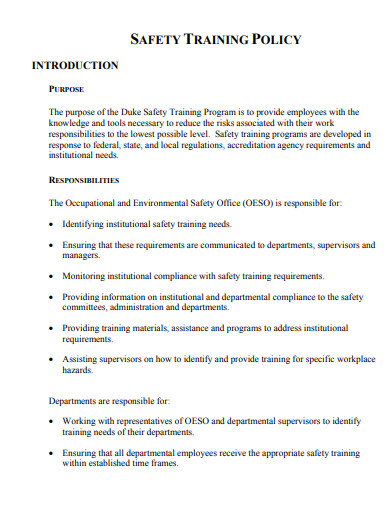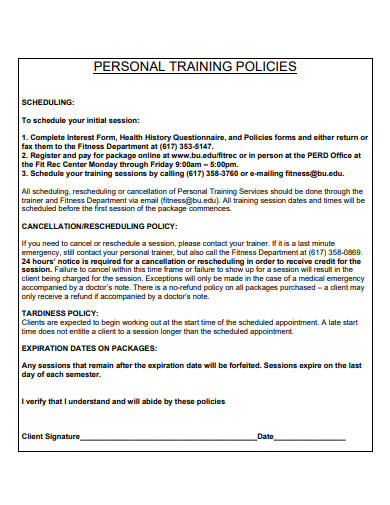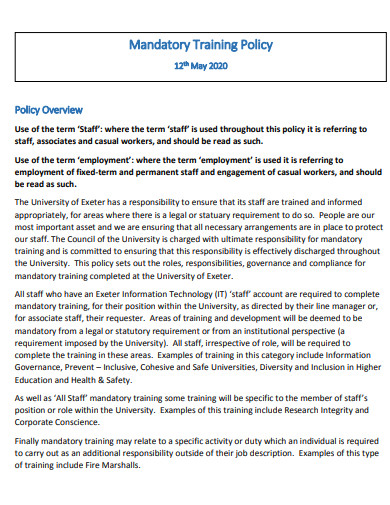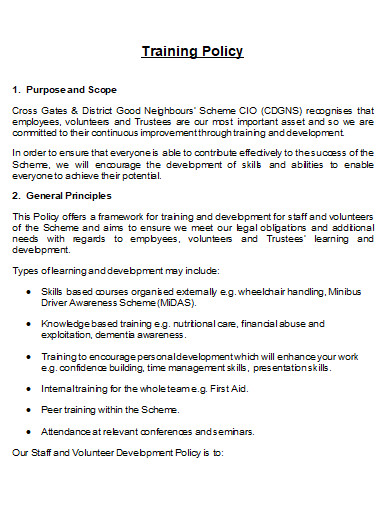The Training Policy is also known as the ‘Staff Training and Development Policy,’ ‘Employee Development Policy,’ and ‘Employee Training and Development Policy,’ among other terms. It is the beginning point for professional growth and activities at all levels of the development venture. A training policy is a plan, plan of action, or guiding concept designed to impact and govern decisions and actions connected to all employees’ capacity building.
10+ Training Policy Samples
In today’s competitive environment, employees must constantly refresh their knowledge and learn new skills in order to execute their jobs better. Both the employee and the employer gain from this training. To support existing and anticipated company objectives and strategies, every organization wishes to continuously enhance staff skills, knowledge, and competences. Organizations thrive on an ongoing learning culture in which employees are required to participate in training.
1. Training and Development Policy
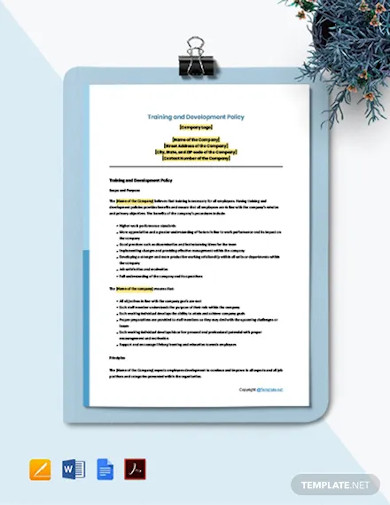
2. Training and Employee Development Policy
3. HR Training Policy
4. Education and Training Policy
5. Travel and Training Policy
6. Preschool Toilet Training Policy
7. Safety Training Policy
8. Personal Training Policy
9. Driver Training Policy
10. Mandatory Training Policy
11. Training Policy Example
Training Policy Purpose
Staff Training and Development Policy or Employee Development Policy are other names for a training and skills development policy. The learning and development programs and activities of the company are covered by this policy. The Human Resources (HR) Department creates and revises a training program every year depending on the firm’s current initiatives and future ambitions. It describes the year’s training goals and priorities.
Sample Employee Training Policy
Scope
This policy applies to all staff of the company, whether they are full-time or part-time. This policy applies to all employees who are eligible, regardless of rank or classified characteristics. Personnel on temporary or short-term contracts are permitted to attend training at the discretion of their managers. Contractors and consultants aren’t covered by this policy.
Policy elements
It takes a team effort to implement a training policy. Employees, supervisors, and HR should all work together to promote a culture of continuous improvement (CPD). It is the responsibility of employees to seek out fresh learning opportunities. Managers are in charge of coaching their teams and identifying training needs. Workshops, seminars, and refresher training are held by the HR Department to keep the employees informed and stay updated on the newest learnings.
Training delivery
Training can be delivered in a variety of ways. The training delivery method chosen is determined by its cost-effectiveness in terms of obtaining the desired training goal. Arrangements for subscriptions or learning materials can also be made as part of the continuing learning and development requirements, when relevant. This gives all employees access to news, articles, and other resources that will help them improve their skills. Employees must, however, obtain written clearance from their managers and the relevant HR staff in order to use this benefit.
A training and development policy must transform the goals and priorities of the organization into tangible, value-added, efficient, and successful learning solutions. The final policy might be either a short or long document, vary according to the size of the organization and its structure and function.
FAQs
What is the importance of a training evaluation?
An evaluation is carried out at the end of each session through forms, surveys, or face-to-face discussion. The effectiveness of the training is determined by the skills, expertise, and competency learned from the program, as well as how the employee intends to apply the new abilities in his or her work. Training activities are assessed to see if the objectives and expectations that the training modules are built on have been satisfied.
What do you mean by identifying training and development needs?
It’s a description of the steps, techniques, and standards for determining training and development needs, as well as the usage of any assessment or performance review systems. Prioritizing training and development needs in respect to organizational priorities, activities, and needs will be necessary. As a result, customized training programs should mirror the organization’s larger-picture challenges, difficulties, or initiatives.
If you want to see more samples and formats, check out some training policy samples and templates provided in the article for your reference.
Related Posts
FREE 10+ Related Personnel Policy Samples in MS Word | PDF
FREE 10+ Suspension And Expulsion Policy Samples in MS Word | PDF
FREE 10+ Student Travel Policy Samples in MS Word | Google Docs | Pages | MS Outlook | PDF
FREE 10+ Uniform Complaint Policy and Procedure Samples in PDF
FREE 10+ Bullying Policy Samples in MS Word | PDF
FREE 10+ Fiscal Control Policy Samples & Templates in MS Word | PDF
FREE 10+ Cooperative Policy Samples & Templates in MS Word | PDF
FREE 10+ Disenrollment Policy Samples in MS Word | PDF
FREE 10+ Donation Policy Samples & Templates in MS Word | PDF
FREE 10+ Homework Policy Samples & Templates in MS Word | Pages | PDF
FREE 10+ IT and Software Policy Samples in PDF | MS Word | Pages | Google Docs
FREE 50+ Policy Samples in PDF | MS Word
FREE 50+ Membership Policy Samples in PDF
FREE 10+ Shipping Policy Samples in PDF
FREE 10+ Expense Policy Samples in Word | Google Docs | Pages | PDF

